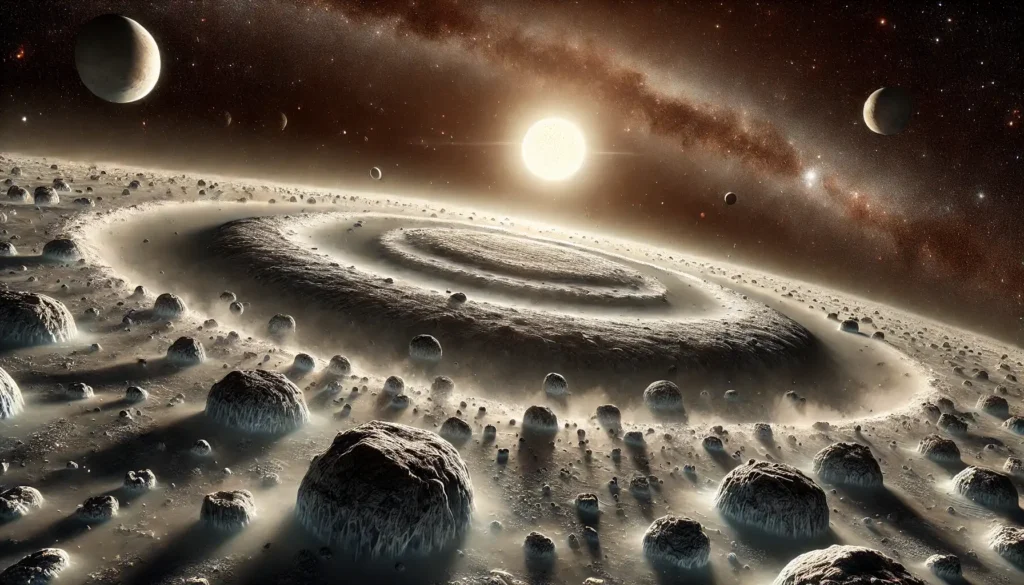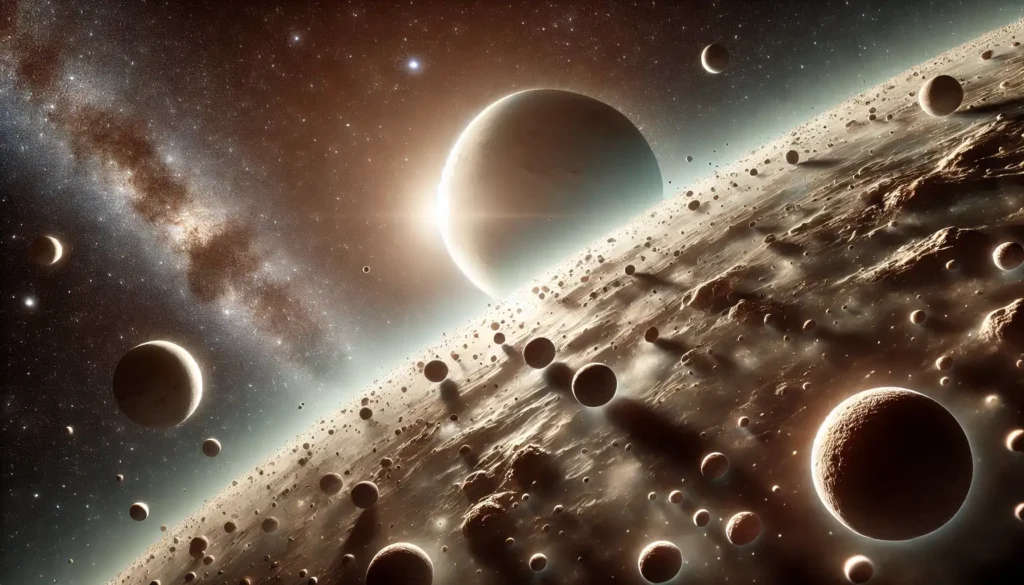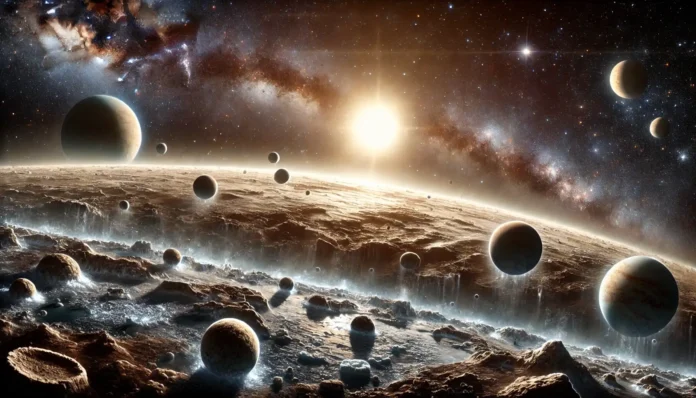Introduction: Unlocking the Secrets of Planetesimal Belts
In the grand narrative of planetary formation, planetesimal belts serve as critical puzzle pieces. These expansive regions, rich with icy and rocky bodies, are the remnants of planet formation and provide key insights into the structure and evolution of planetary systems. The study REsolved ALMA and SMA Observations of Nearby Stars (REASONS): A Population of 74 Resolved Planetesimal Belts at Millimetre Wavelengths, published in Astronomy & Astrophysics, Volume 693, January 2025, sheds new light on the distribution, composition, and dynamics of these intriguing celestial structures.
Why Planetesimal Belts Matter
Planetesimal belts play a vital role in planetary system evolution and serve as windows into the past, offering clues about the early conditions of planetary formation. They influence planetary architectures and act as key indicators of hidden exoplanets.
1. Cosmic Dust Factories
These belts continually produce dust as planetesimals collide, making them visible at millimeter wavelengths. Observing the distribution of dust helps astronomers infer the location and composition of underlying planetesimals.
2. Tracers of Planetary Interactions
The presence and structure of planetesimal belts can reveal gravitational influences from unseen planets. As planets migrate, they can stir or sculpt these belts, leaving behind signatures that help scientists infer planetary positions and masses.
3. Insights into Long-Term Evolution
By studying these belts, researchers can determine how planetary systems evolve over time, particularly regarding collisional dynamics and material depletion.
The REASONS Survey: A Comprehensive Study

The REASONS project employed the Atacama Large Millimeter/submillimeter Array (ALMA) and the Submillimeter Array (SMA) to study 74 nearby planetary systems. The data provided a uniform and high-resolution view of planetesimal belts, allowing for a comparative analysis across a large sample.
The primary goals of the survey were:
- To characterize the spatial and compositional properties of planetesimal belts
- To explore the dynamical evolution of these belts in various planetary systems
- To provide a legacy dataset for future studies on planetary formation
Key Findings from the REASONS Survey
1. Dust Mass Depletion Over Time
One of the most significant discoveries from the survey was the gradual decrease in dust mass over time, with depletion rates varying based on radial distance from the star. Smaller belts exhibited a more rapid depletion, aligning with collisional evolution models.
2. Broad Disk Structures
Most of the observed planetesimal belts were found to be broad rather than confined rings. This contradicts prior assumptions that protoplanetary rings evolve into narrow debris belts. Instead, researchers suggest that outward migration of material or unresolved substructures could explain the observed broadness.
3. Vertical Aspect Ratios and Orbital Inclinations
The study analyzed the vertical distribution of 24 planetesimal belts, revealing orbital inclinations ranging from 1° to 20°. These variations suggested relative particle velocities of approximately 0.1 to 4 km/s. Interestingly, no direct correlation between belt height and system age was found, indicating multiple possible evolutionary pathways.
Implications for Planetary Science
1. Refining Collisional Evolution Models
The survey’s findings provide empirical support for theoretical models describing the collisional evolution of planetesimal belts. Understanding dust depletion patterns allows scientists to refine predictions about how planetary systems age and develop.
2. Challenging Previous Assumptions
The prevalence of broad disks suggests that debris structures are more complex than previously thought. These findings could redefine how astronomers interpret exoplanetary system formation.
3. Probing Hidden Exoplanets
Unseen planetary influences shape the structure of planetesimal belts. By identifying asymmetries or gaps in these belts, astronomers can infer the presence of yet-undetected exoplanets.
Future Prospects: A Legacy for Astronomical Research

The REASONS dataset represents a milestone in planetary science, offering a valuable resource for future studies. The survey’s findings pave the way for multi-wavelength observations, theoretical modeling, and potential follow-ups with next-generation observatories.
Upcoming missions, such as the Extremely Large Telescope (ELT) and NASA’s Habitable Worlds Observatory, will further enhance our ability to study these distant planetary systems in unprecedented detail.
Conclusion: Expanding Our Cosmic Perspective
The REASONS survey has significantly advanced our understanding of planetesimal belts and their role in shaping planetary systems. By revealing how dust and debris evolve over time, the study provides a crucial link between protoplanetary disks and mature planetary architectures. As astronomers continue to refine their models, these findings will remain instrumental in decoding the complex interactions governing planetary system evolution.
Source
This article is based on the study published in Astronomy & Astrophysics:
Title: REsolved ALMA and SMA Observations of Nearby Stars (REASONS): A Population of 74 Resolved Planetesimal Belts at Millimetre Wavelengths
Journal: Astronomy & Astrophysics, Volume 693, January 2025
DOI: Read the full article




